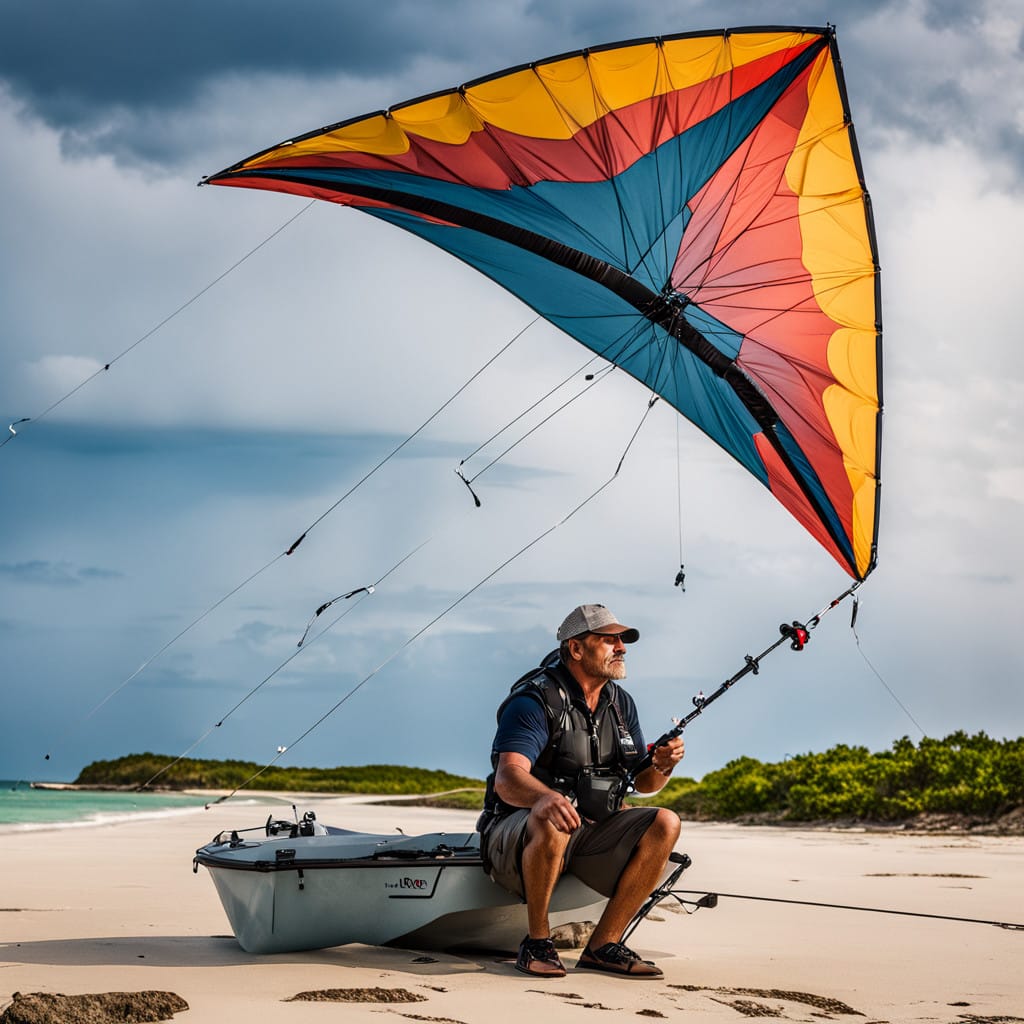
The Fascinating World of Kite Fishing: A Unique Sport with Rich History and Global Appeal
Kite fishing is an exciting and innovative sport that has captivated outdoor enthusiasts worldwide. Combining the skill of traditional fishing with the ingenuity of kite flying, it offers a one-of-a-kind experience for participants. While kite fishing has ancient roots, its modern popularity reflects a growing appreciation for sustainable and creative fishing methods. This article explores the sport’s history, global presence, amateur involvement, professional leagues, societal significance, and the rules that govern it.
The Origins and History
Kite fishing is believed to have originated in the Pacific Islands, where indigenous communities first used kites as a fishing tool. Islanders from Polynesia and Micronesia crafted kites using bamboo and leaves, attaching fishing lines to catch fish in deeper waters. This ingenious technique allowed them to bypass reefs and rocky shorelines while conserving resources.
In Southeast Asia, kite fishing also gained prominence. Thai fishermen used colorful, hand-crafted kites to target schools of fish in inaccessible areas. The method was not just a practical solution but a cultural tradition, passed down through generations.
The sport began evolving during the 20th century as anglers in countries like Australia and New Zealand adopted it for recreational purposes. Innovations in kite design, including the use of synthetic materials, expanded its possibilities. Today, kite fishing combines ancient traditions with modern technology, making it both a heritage sport and a contemporary pastime.
Global Popularity
Kite fishing has grown beyond its origins, gaining popularity in various parts of the world. Coastal countries in Africa, particularly South Africa and Kenya, use it as both a livelihood and recreational activity. Its allure lies in the simplicity of setup and the thrill of catching fish using wind power.
In the Americas, it has found a home in Florida and the Caribbean. The clear waters and consistent breezes make these regions ideal. Tournaments like the Miami Kite Fishing Championship attract professionals and amateurs alike.
Australia and New Zealand remain central to kite fishing’s modern appeal. Their vibrant fishing culture, coupled with an abundance of coastal regions, has fostered a passionate community of kite fishers. These nations often serve as hubs for innovation in kite technology.
Meanwhile, in Europe, it is emerging as a niche activity. Enthusiasts in countries like Spain and Portugal enjoy its eco-friendly approach. The sport’s combination of tradition and sustainability has begun resonating with those looking for a unique outdoor challenge.
Amateur Kite Fishing: A Gateway for All Ages
Amateur kite fishing offers an accessible way for beginners to engage with the sport. Youth programs, community groups, and schools worldwide are incorporating it into their outdoor activities. Learning the fundamentals of kite fishing can teach essential skills such as wind assessment, knot tying, and environmental awareness.
For children, it can be a hands-on introduction to marine biology and conservation. Programs like “Fishing with the Wind” in Australia focus on engaging young minds through fun and educational workshops. By teaching the art of kite flying and fishing, these initiatives promote sustainability and outdoor adventure.
Schools and youth groups often organize kite fishing contests to foster friendly competition. Such events encourage teamwork and problem-solving. Participants learn to adapt to wind conditions and water currents, developing patience and strategic thinking.
Amateurs also enjoy the sport for its ease of entry. The basic equipment—a sturdy kite, fishing line, and bait—is affordable and widely available. Beaches, lakes, and even riverbanks can serve as venues, making it an inclusive activity for families and friends.
Professional Kite Fishing Leagues
It has advanced into a competitive sport, complete with professional leagues and tournaments. These events bring together the best anglers who compete for trophies, prizes, and recognition.
In the United States, the Annual Florida Kite Fishing Championship showcases the skill and creativity of participants. This high-stakes event attracts top-tier anglers and draws significant media attention. Similarly, the Caribbean Kite Fishing Cup celebrates the region’s fishing heritage, blending sport with cultural festivities.
Australia’s National Kite Fishing League is another notable example. With multiple divisions and seasonal tournaments, it promotes the sport at both grassroots and professional levels. Participants often use custom-designed kites to tackle challenging conditions.
In Asia, competitions like the Thailand Kite Fishing Open have gained momentum. These events highlight traditional techniques while integrating modern advancements, creating a vibrant fusion of old and new.
Globally, professional kite fishing leagues serve as platforms for innovation. They encourage anglers to develop new methods, gear, and tactics, pushing the sport’s boundaries while inspiring the next generation.
Political and Social Significance
It is more than just a sport; it holds political and social significance in many communities. Its emphasis on sustainability aligns with global efforts to promote eco-friendly practices. By reducing reliance on motorized boats and fuel-intensive techniques, it minimizes environmental impact.
In regions like Southeast Asia and the Pacific Islands, it is a symbol of cultural heritage. Festivals celebrating the sport often draw international tourists, boosting local economies. For indigenous communities, it represents a way to honor ancestral practices while adapting to modern challenges.
Socially, it fosters community engagement. Coastal towns and villages often hold kite fishing days, bringing people together to share experiences and knowledge. These events strengthen bonds and encourage cross-generational learning.
Politically, it serves as an example of how traditional practices can influence modern policy. Governments in countries like New Zealand have used it to promote sustainable fisheries, setting quotas that balance sport and conservation.
Understanding the Rules of Kite Fishing
It operates under a set of guidelines that ensure fairness, safety, and environmental responsibility. While rules may vary depending on the region or competition, several principles remain consistent.
Basic Setup Rules
Anglers must use approved kites and fishing lines, often regulated in professional tournaments. The setup includes a kite, line, rig, and bait. Kites must be flown within designated boundaries to avoid interfering with others.
Environmental Regulations
Participants are expected to follow catch-and-release policies where applicable. This helps preserve fish populations. In many areas, the use of biodegradable materials for rigs and baits is encouraged to reduce environmental harm.
Competition Guidelines
Tournaments often impose time limits and scoring systems. Points are awarded based on fish size, species, and quantity. Judges monitor compliance with rules and penalize any violations.
Safety Protocols
Safety is a priority. Anglers are required to wear life jackets if fishing from a boat. Additionally, kites must be flown away from power lines and crowded areas to prevent accidents.
Respect for Local Customs
In places with traditional kite fishing practices, participants are urged to respect local customs. Following these unwritten rules fosters goodwill and preserves cultural integrity.
Conclusion
Kite fishing is a remarkable blend of tradition, innovation, and adventure. Its history reflects the ingenuity of early fishermen, while its global appeal underscores its versatility. From amateur enthusiasts to professional leagues, the sport continues to inspire a diverse audience. Its cultural, environmental, and social significance only adds to its charm.
As it gains momentum, it serves as a reminder of how sports can connect people to nature and heritage. Whether competing in a tournament or enjoying a casual day on the beach, it offers an unforgettable experience for all.





